How Long to Let Wood Dry Before Painting?
How to paint wood if it is wet and what materials you will need for that
Planning painting projects means that you will have to spend some time and effort on completing them. Also, we sometimes might need to buy extra tools for that as well. So naturally, we want to be absolutely sure that when it is time to go and paint, nothing will ruin our plans.
However, one can not always plan everything and often weather or other factors may cause disturbance and threaten our painting project. Do you want to know what to do if you planned to paint wood and it happened to be wet? If yes, then keep on reading since today you will learn plenty of other useful information on this subject!
How Long Do You Have to Let Wet Wood Dry Before Painting It?
The major point of concern for us when we end up with wood that is damp and that is needed to be painted right now is how much time it might need for drying enough. Of course, in the ideal world we would have to wait until the wood dries completely, however, in most cases, we simply have no time for that at all!
So for instance, if you were planning to complete the painting project during the weekend but weather ruined your plans and the wood got wet, you will have to wait for at least one day until the timber is dry enough for applying paint onto it.
Naturally, it all will depend on the weather. Let’s say, if the weather is sunny and warm, and dry in your area, be sure that the wood will dry enough for you to paint it. However, if you live in a damp or cold climate with a pretty high level of humidity, you’d better not expect that timber to get dry enough that fast. The same is true for the wooden objects that are located in shaded areas.
So if you recognize one of those as your case, don’t get upset too early. Instead, learn how you can make your wooden object dry faster.
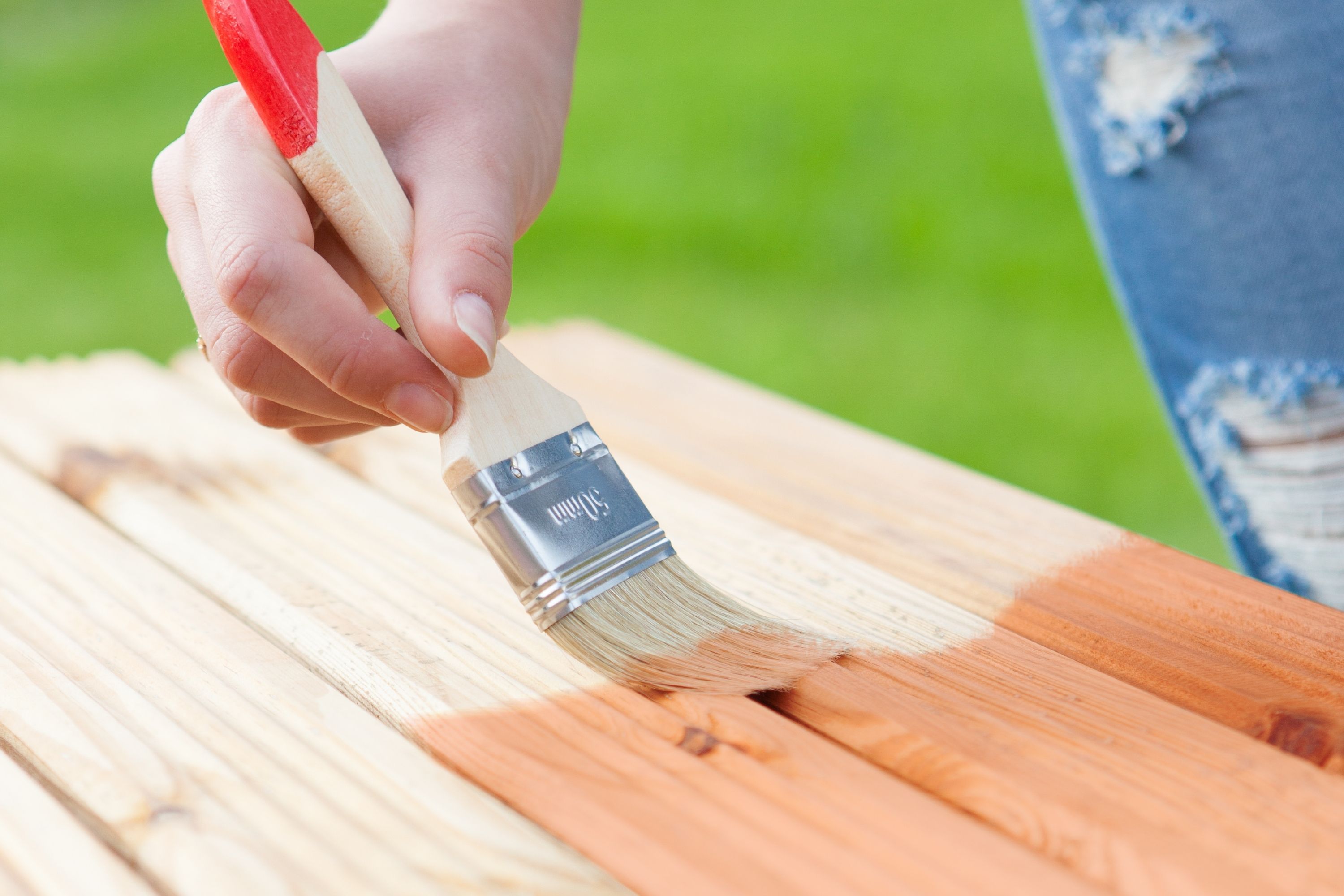
Credits: NinaMalyna, via Canva.com
How to Dry Wet Wood Before Applying Paint to It?
There are several different options you can stick to if you need to make wood dry faster for painting it. Depending on how large is your wooden object, you can choose one of the following suggestions:
- make use of a hairdryer for speeding up the drying process
- try to dry your wood in smaller sections one by one
- dry the wood with paper towels or an old towel
- opt for an electric fan
Now let us explain when and why each of these methods can be used. So let’s start with a common hairdryer first. As you could have guessed, using a blow dryer is reasonable if you need to make a relatively small piece of wood dry faster.
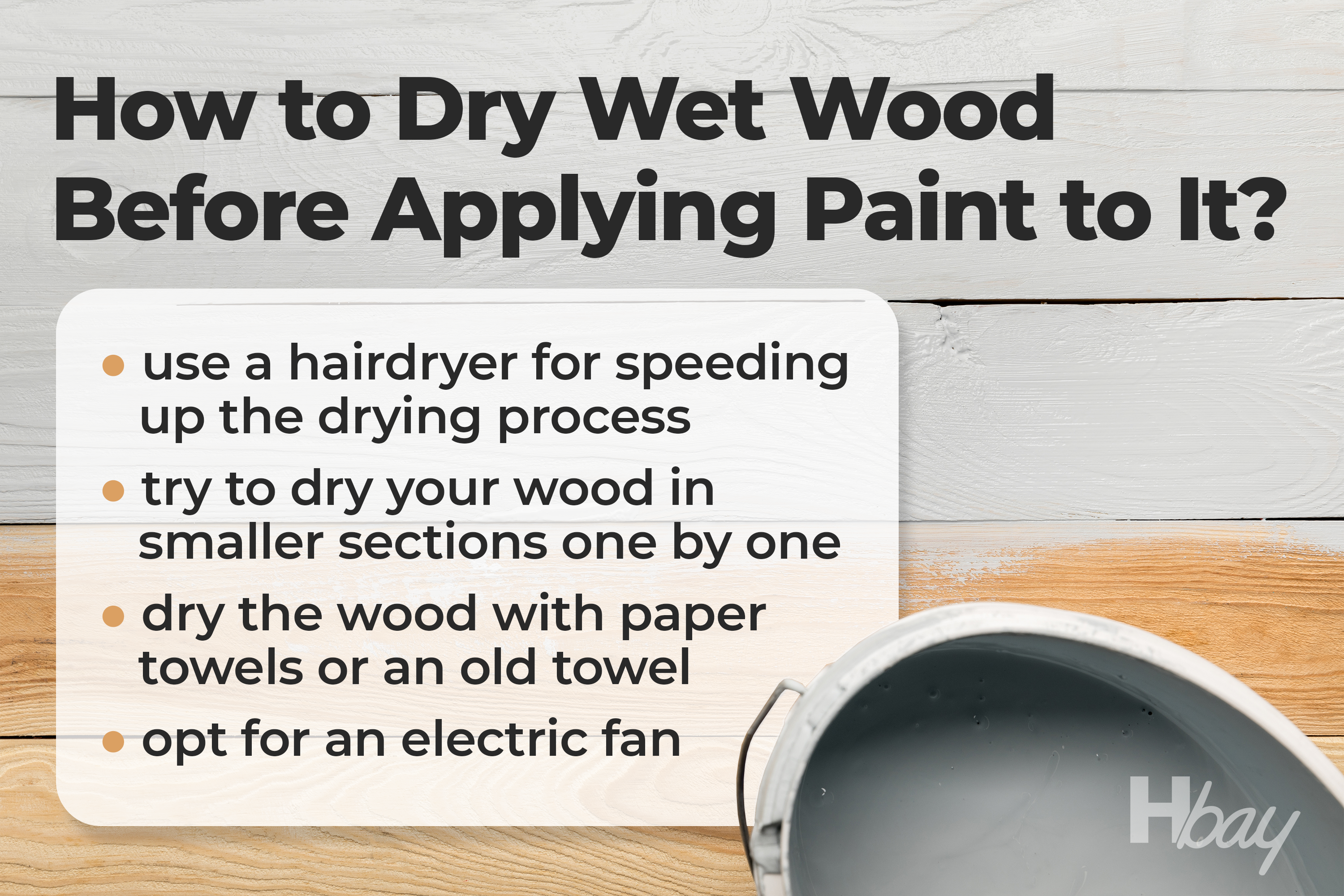
Housekeepingbay.com
The scheme is the same as you would use for drying your own hair. Simply turn the appliance on, setting it at the high heat regime, and blow warm air over the damp piece of wood until it gets dry. The hot air will make moisture evaporate from the surface of the wooden object thus leading to its dryness.
However, if you are dealing with quite a big piece of wood, using a hairdryer will most likely make no sense due to the size of the wood piece. In this case, you can opt for another alternative solution. Try to dry and paint such a surface in smaller sections. Like this, you will be slowly working through the entire project. On the other hand, this method has the huge disadvantage of being very time-consuming. Besides, using a hairdryer for this method will most likely result in extremely huge electricity bills!
There is one more way you can make a wood dryer, but this one is more for absorbing the excess water from the wooden surface rather than for actually drying it. We mean that you can simply make use of an old towel or grab a packet of paper towels and dry your wooden object with them. Of course, this option is only suitable for relatively small objects that will later be properly prepared and dried before being painted.

In case you are about to paint a small wooden project, think of drying it with an electric fan! The scheme of use is the same as for the blow dryer. Simply set the fan up and blow the hot air over the wood to make it dry faster.
These are the very basic methods everyone can use for making wood dry before painting it. But don’t just stop on one of these! Always try to think wider and be creative! For example, if it is possible, try to move your wooden object indoors and make use of a dehumidifier for pulling moisture out of it and for making the timber dry faster.
Also, in case you are working with loose building materials and you need to make them dry faster, think of stacking the boards with the use of scrap lumber or furring strips. Those create gaps between the boards thus allowing the airflow to dry the lumber easier.
But anyway, do keep in mind that, even though all of these methods are effective and quite easy to use, none of them can replace the most efficient one which is time. So if you have such an opportunity, simply let your wooden project dry itself open air.

Credits: South_Agency, via Canva.com
Table of Contents
How to Tell the Wood Is Dry Enough For Being Painted?
Apart from being concerned with the wood drying methods, you might also be worried about another issue. How is it possible to define that the wood is dry enough for being finally painted?!
Indeed, when it comes to timber, figuring out whether it is paintable or not might be tricky and rather complicated. Wood may often seem quite dry on the outside but if you could see its insides, you would realise that it is far from being ready to accept paint.
This is why it is important to take into consideration a few handy tips that will help you to figure out if the wood is dry enough to paint.
- Define how exposed it is to the weather. An uncovered deck will most likely be more saturated with rain than, let’s say, siding that is protected by eaves (which is why it will be a bit damp).
- Take the sun into consideration, too. For instance, a West-facing wall will dry faster than a North-facing one simply because it receives more of the afternoon sun.
- Consider what made your wood wet. For example, a wooden object that was dampened with rain would be less saturated in comparison to the same object that was power washed under the high pressure. Since power washing allows water to get into the tiniest cracks and crevices that are normally out of reach for the falling rain water, if you pretreat your wooden piece with it, be ready that it will take more time to dry.
- Make a bead test to see how much your wood is saturated. Simply sprinkle some water on the wooden surface of the object that needs to be painted. If you see that the liquid beads up on the surface, it means that the timber is already too saturated inside making it impossible for water to get in anymore. Naturally, such wood will not accept paint easily.
- Finally, for the most precise results, we would recommend you use a special moisture meter. This tool is fairly cheap and it is able to show you exactly how wet your wood is in numbers. You will see the percentage of the moisture level on the tool’s screen after using it.
When using one of these methods, you will be able to exactly define how wet your wooden piece is and whether or not it can be painted.

Credits: momcilog, via Canva.com
Can You Paint Wood That Is Wet?
So can wet wood be painted at all, you may wonder? Well, basically, the answer is yes. However, you might not want to do this, and we can explain to you, why.
First of all, when any wood gets wet, its fibers absorb water. It means that there will be less wooden fibers ready to accept paint. As a result, the paint will not attach to the wooden surface properly. What you can get in such a case is a sloppy paint application if the wood is too saturated. When such a paint layer dries, it will soon get off the wood.
Another problem that you may face if applying paint onto too wet timber is that the liquid in wooden fibers can make the paint thinner. As a result, you will end up with poor coverage and lots of runs and drips instead of an even and neat paint layer. Also, once such a paint coverage dries up, you will most likely have more of a wash than a paint job.
And even if the wooden object is not too dry, it will not be able to accept the paint to the fullest in comparison to a fully dry counterpart. And since the paint will not manage to be deeply absorbed by the wood fibers, the finish will be way less durable and stable.
Finally, painting wood that is wet puts the timber under the risk of rotting. Why is that? Well, if we apply paint onto a dry wood, it creates a protective layer that works as a seal against moisture. And in this case, it is obviously a benefit!
However, if we paint wood that is damp or soaked, that paint layer will trap moisture inside the wooden fibers thus preventing it from drying. This is why the trapped moisture will make your wood rot from inside out!
This is why it is always suggested that you wait until your wooden object is fully dry and ready to accept paint. But even if you have no time to wait until it dries up naturally, don’t hesitate to use one of the drying methods we described above. But never ever attempt to apply paint onto a wet or badly saturated wood to avoid redoing the whole painting project!
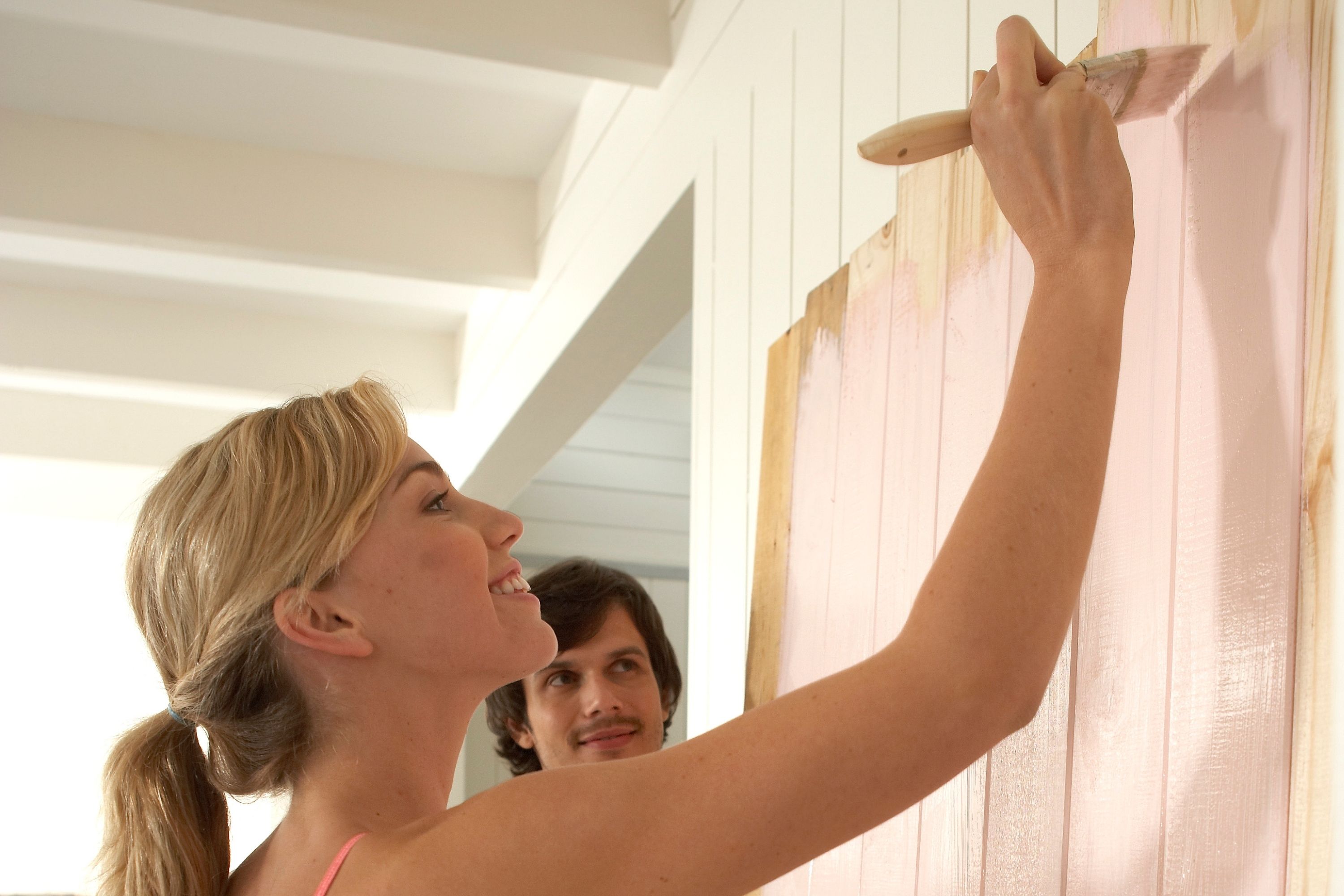
Credits: Pixland, via Canva.com
What Type Of Paint Is Best to Use On Damp Wood?
If you do need to paint wood that is damp, it is important to know what type of paint will attach to it better and thus will last longer. So basically, latex paints are way more suitable for being applied onto the wet wood than any other types of paint.
This is because latex paints are water-based which means they will better bond with the moisture that is already inside of the wood. It will also significantly reduce the chances that the paint layer will later peel off.
As for the oil-based paints, these are better to be completely avoided since oil is resistant to moisture which means that such paint will not attach to the wet timber completely.
The type of brush also matters quite a lot. See, if you are painting your wood object with a foam brush, it will not hold much paint. As a result, you will have a thinner yet more even layer of coating. But a bristle brush will be able to hold and apply a thicker layer of paint instead.
And it matters a lot as long as you will be painting damp wood. If you apply too much paint at a time, it will result in a mess. This is why we would recommend you use a foam brush since it will help you to regulate and control the amount of paint applied.
So now you know how much time wet wood needs for getting dry enough so that you could paint it properly. And also, since you already learned a few methods of how to speed up the drying process, you now can make sure the wooden object you are about to paint is dehumidified enough for the paint to attach to it properly.
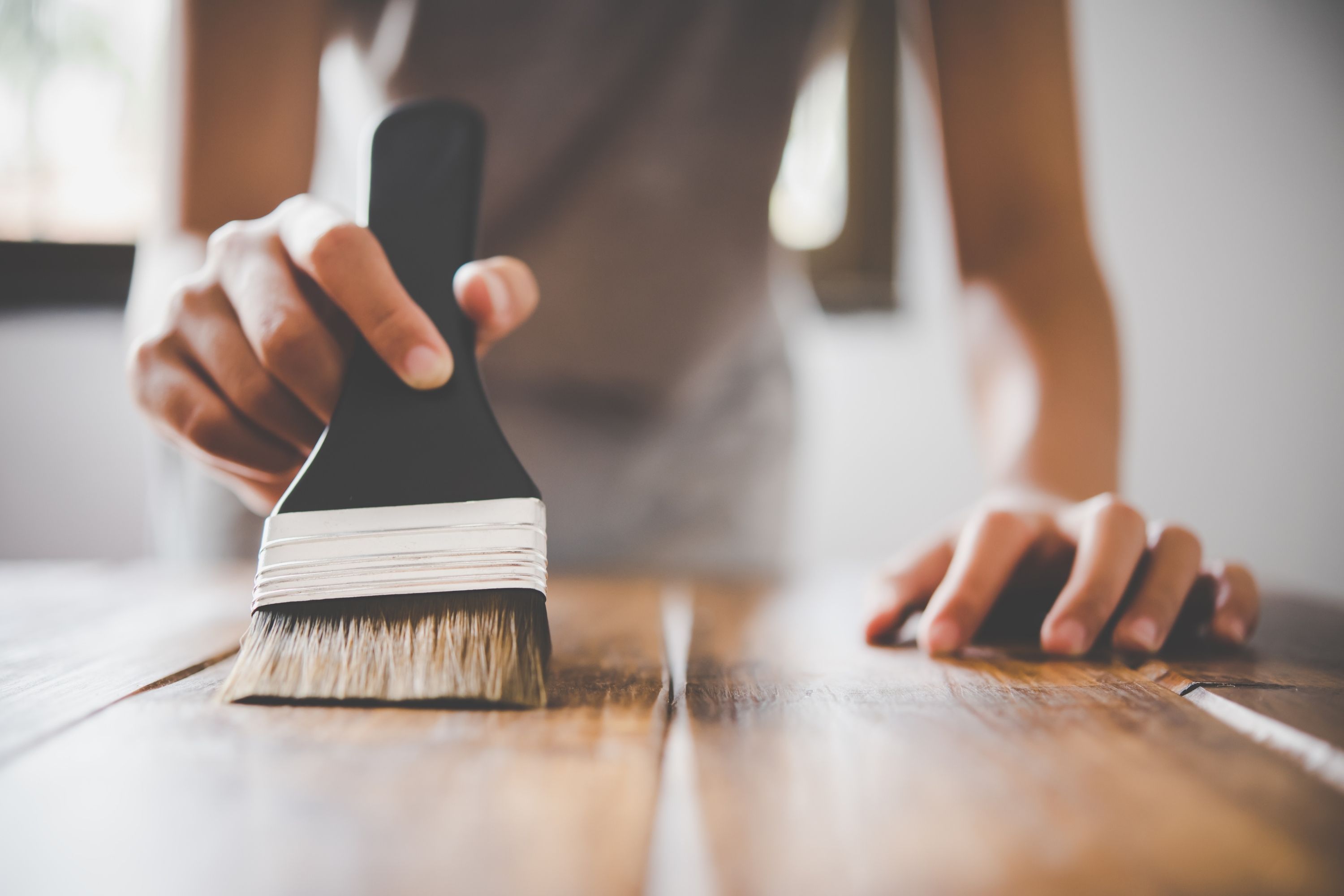
Credits: photobyphotoboy, via Canva.com
Ever wished paint sampling was as easy as sticking a sticker? Guess what? Now it is! Discover Samplize's unique Peel & Stick samples. Get started now and say goodbye to the old messy way!
Get paint samples




Frequently Asked Questions
⭐ Can you paint treated wood?
Yes, treated wood can be painted.
⭐ How long to let old wood dry before painting?
If it’s not too soaked, two days will be enough. Otherwise, wait for up to 1 week.
⭐ What’s the best primer for pressure treated wood?
Latex primer is the optimal choice.
21 thoughts on “How Long to Let Wood Dry Before Painting?”
Leave a Reply

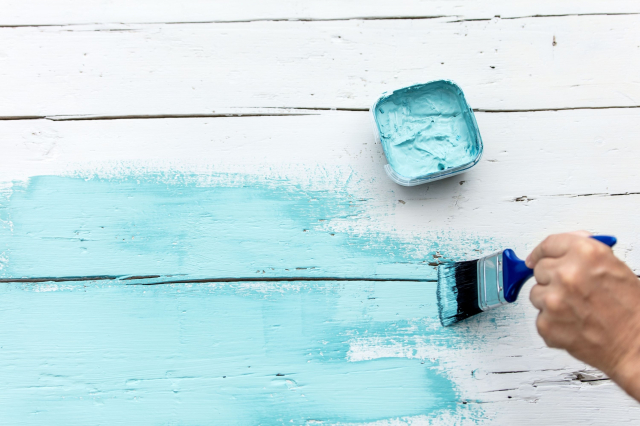


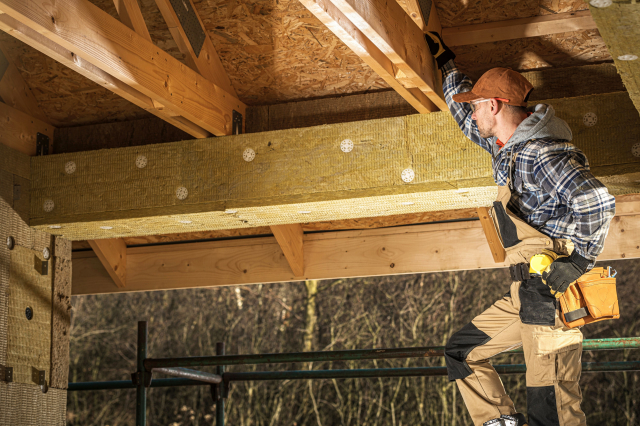
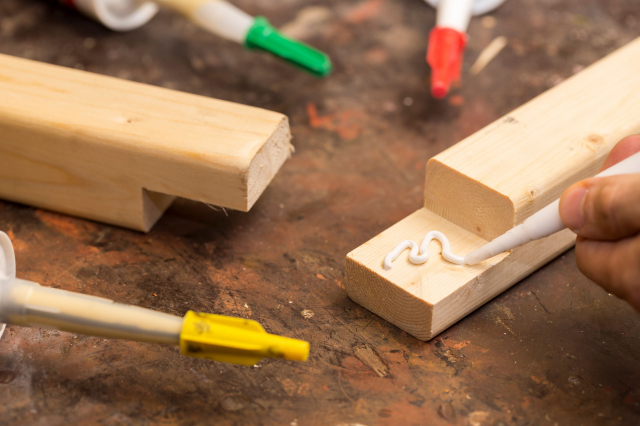
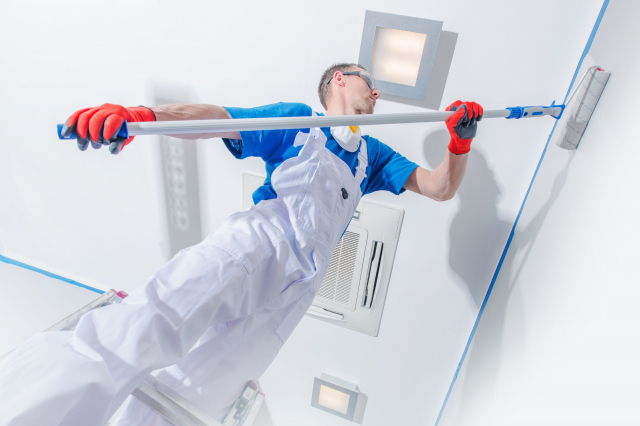

Hello. I’m here for your advice. I want to prime pressure-treated wood, but I don’t know what type of primer to use. Could you suggest the best primer for pressure treated wood?
Can you paint pressure treated wood using paint from Home Depot? I’ve never worked with this kind of wood before, so I don’t know which paint is best for it. Thanks for any recommendations!
I guess you can buy paint from Home Depot that acn be used for staining pressure treated wood. But this is only my guess. I never had to paint this kind of lumber, so I’m not knowledgeable about paints, sorry.
Hi everyone! Could you please recommend the best exterior paint primer for pressure-treated wood, please? Price doesn’t matter. I just need the product to be top quality!
Hi! I remember I used the primer called Kilz Primer for Pressure-Treated Wood. This one worked really well! So this is the only product I can recommend.
How long does it take for pressure treated wood to dry after rain?
Well, I know that you should wait for 72 hours for pressure-treated wood to dry. But if your wood got wet after rain, I’d say you should wait for 2-3 days more. The exact time depends on how wet the wood is right now. If it’s not too wet, it could dry in 24 hours in a dry place, I guess.
Hello! Thank you for explaining about wood drying time. Could you please also tell me how long should pressure treated wood dry before staining?
Hey there. I don’t know the exact time needed, but you should wait until your wooden surface is completely dry after pressure treating. Typically, it takes about three days, no more.
Should you wet a fence before painting? The fence is wooden just in case.
Of course you should not do this! Who told you that?! Wet or damp wood will not be painted properly since the paint will start peeling off too quickly. On the contrary, the wood must be completely dry for painting it.
A friend of mine advised me to use a moisture meter before painting my wooden barn. But since I’ve never used this appliance before I don’t know what moisture rate is ok. What is the adequate moisture level in wood for painting? Does anyone know?
I only know the percentage of moisture. I mean that for the exterior wood, it should contain no more than 15 percent of moisture for being painted. Interior wood must have around 12 percent respectively. But I don’t know the exact numbers, sorry.
What happens if you paint the damp wood?
I’m not a professional painter, but I guess the paint will not attach properly to the surface of what you are painting. As an option, it may start peeling off too quickly. I’m not even sure that it will dry if the surface underneath it is damp or wet!
How to tell if wood.is dry enough to paint it? Is it enough if it’s dry to the touch?
Well, I’d not rely on your senses, to be honest. See, wood is a tricky material. It can be dry from the outside but still damp deep inside. I suggest you use a moisture meter. This way, you’ll know for sure whether your wooden item is ready for painting.
Can spray paint be used on a wet wood? Do you think it will attach to such a surface if it’s not deeply soaked?
Judging from my own experience, spray paint will peel off pretty fast once it’s dry. See, damp wood does not hold paint well enough even if it’s a canned paint like latex, etc. Spray paint will even not get attached properly, I guess.
Do I need to prep wet wood for painting somehow? I need to paint a garden table but it got literally soaked yesterday because of the rain. What do I need to do to make it accept the paint properly?
Well, the only thing that comes to my mind is that you need to dry it first of all. If it’s so much soaked as you described, I’d say you should use a dehumidifier, but for this, you’ll need to bring the table indoors, into the garage, for example.
If that’s not an option, try to dry it with a fan or a blow dryer.